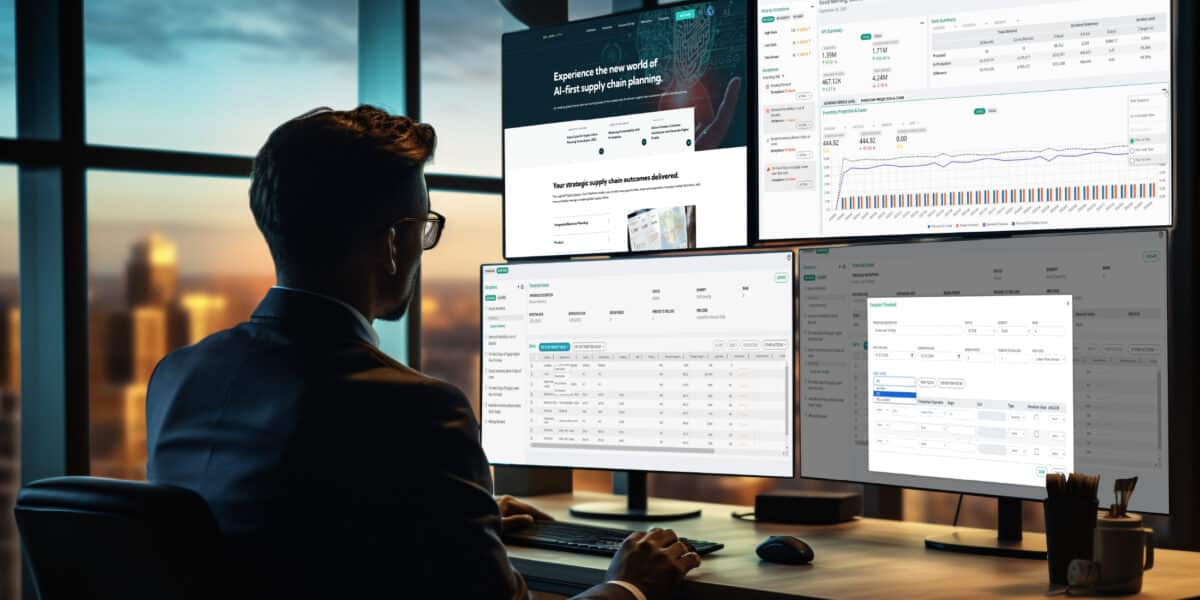
Does Your Company Love Its Sales Forecasting Process?
Outlined below are five of the best use cases for sales forecasting based on dozens of projects our customers have executed with our technologies.
Sales Planning
Sales planning is essential for any company – but especially for firms in high growth mode or experiencing a change like adding new products or entering new markets. The fundamental job of the forecast is to balance sales and marketing resources against supply capacity planning. Forecasting will help answer these critical questions:
- Do we have enough sales people to achieve the volume of orders we have budgeted?
- Do we have the right mix of price, promotion and marketing in place to drive demand?
- Do we have the essential demand-side resources in place (e.g., travel budget, product training, partners)?
If your business does a good job in these areas, you might also ask where you could do better. What territories or teams are over-performing/under-performing, and how will this impact achieving the forecast?
| Focus | Prediction | Units |
| Sales and marketing resource planning | Near-term and long-range planning | Volumes and dollars |
Demand Planning
Demand and supply needs to be balanced at the volume level to address big picture business planning and mix level to enable customer and product needs. Without good demand planning, companies face the situation of unhappy customers, late shipments, cancelled orders, excess inventory, longer lead times, expedited shipping costs, and a host of other potential issues.
Modern sales and operations planning uses forecasting as the central input to the demand side of the equation. The statistical forecast is generated to make adjustments to sales and production planning. And the organization may make adjustments to the forecast to reflect their insights into how market conditions may impact the forecast.
| Focus | Prediction | Units |
| Supply and demand balancing | Months and quarters | Volumes |
Financial Planning
Forecasting the business’s future sales is essential to the finance function. It is used to develop the annual budget and maintain the long-range business plan – typically extending out five years. Unlike demand planning, the forecasting is typically done initially in dollars and translated to production volumetrics in the annual budgeting cycle. These forecasts are necessary to determine product and G&A costs – which are ultimately required for profit and loss management.
For many companies, the annual forecasting cycle can be a huge exercise that carries a lot of time, resource and risk. Adopting a Sales and Operations Planning (S&OP) process and platform can be a great way to address this problem. S&OP is a process that involves generating both dollar and volumetric forecasts to drive visibility into every step of the business process. The output of S&OP includes dollar-based sales predictions, production volume requirements and inventory levels. Creating a system to capture these metrics means they are available at any time – eliminating the need for the strenuous annual budget preparation exercise.
| Focus | Prediction | Units |
| Long-range planning and annual budgeting | Months and years | Dollars |
Distribution Center Replenishment
Companies that fulfill through distribution centers face the challenge of balancing supply and demand at the production, master warehouse and distribution center level. That’s not an easy task and is typically handled using Distribution Requirements Planning tools. Demand is captured via customer orders for near-term action and from a forecast for longer-term planning.
The challenge here is that detailed forecasts at a product level must be generated at the distribution center level. While forecasting works well with lots of data, it can choke when the data is too thin. This means good forecasting practice and technology is essential.
The best practice here is segmenting out SKU level volumes and dollars and adopting the best forecast strategy for groups of SKUs. ABC/XYZ segmentation is the starting point and groups together SKUs by volume and demand variability to select the best method. Forecasting software can then automatically choose the right algorithm for the situation, and kick out the SKUs with too few data for handling in other ways.
| Focus | Prediction | Units |
| Mix planning at location level | Weeks and months | Volumes at item level |
Master Scheduling
The purpose of master scheduling is to balance demand and supply at the mix level. Unlike the demand forecast, it will need to be expressed in SKUs, products, customer orders, etc. And the forecast will be near-term, usually in weeks instead of months. This helps downstream planners determine more precisely when items will be needed.
A weekly forecast can be generated in different ways. A common practice is to divide the monthly forecast by the accounting cycle (four or five weeks) to approximate the number of weeks in a month. Sometimes, the weeks can be weighted for volume-based manager input.
| Focus | Prediction | Units |
| Determining production resource | Near-term weeks and months | Volumes |
Forecasting to support master scheduling is the foundation for effective customer order promising. It helps to generate an actionable production plan that is more precise, transparent and measurable.
The Results
Sales forecasting has tremendous value across the entire organization. To gain value, however, requires a clear understanding of where it can be used. In general, any planning function requires some educated guesses about what will happen in the future – and that’s the key value of a good forecast.
| Focus | Prediction | Units | |
| Sales Planning | Set sales and marketing resources and plan | Months and quarters | Volumes and dollars |
| Demand Planning | Balance supply and demand in S&OP process | Weeks, months, quarters | Volumes |
| Financial Planning | Long-range planning and annual budgeting | Months, quarters, years | Dollars |
| DC Replenishment | Mix allocation stock planning | Weeks and months | Volumes |
| Master Scheduling | Production planning | Weeks, months, quarters | Volumes |
Want to learn more? Read The Top Five Benefits of Using Machine Learning for Demand Forecasting



